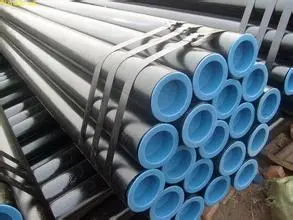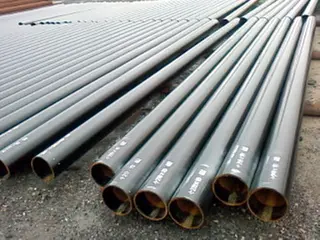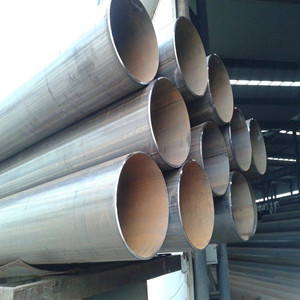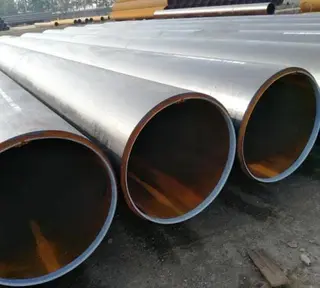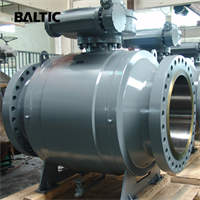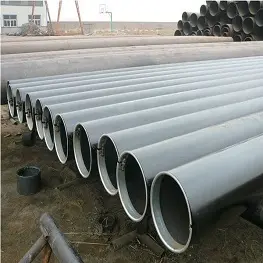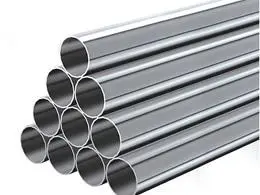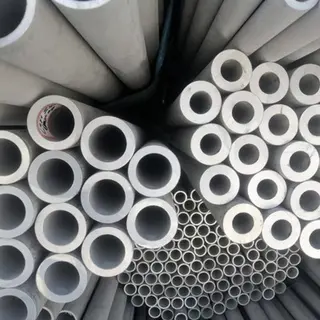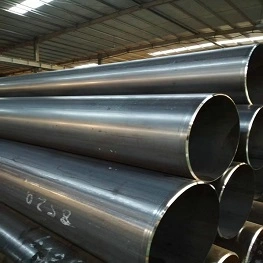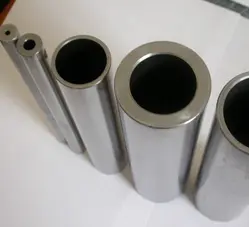Structural Adjustment of Welded Pipes
The Central Economic Working Conference in December 2020 pointed out that China's carbon dioxide emissions will strive to peak before 2030, and achieve carbon neutrality before 2060. In the future, carbon peaking and carbon neutrality will be an important issue in the development of China's steel industry. As a steel processing industry, welded pipes will usher in opportunities for structural upgrading and sustainable development in the future low-carbon and green ecological development.
In the past ten years, with the strategic improvement and rapid development of international energy, steel pipes have been used more and more in transporting energy. Welded pipes have an important position due to their advantages of economical resources, convenient manufacturing processes, and being suitable for large-diameter manufacturing. Figure 4 shows the composition of the apparent consumption of welded pipes in the United States, the world's largest energy consumer. Among them, line pipes, oil casings, structural pipes, mechanical pipes, and standard pipes (referring to standard pipes for general transportation and structure) account for more than 96%. The consumption of oil casing is affected by market fluctuations; the apparent consumption of line pipes and standard pipes is relatively stable, and the proportion of line pipes in the apparent consumption of welded pipes is relatively high. Mechanical pipes and structural pipes show a slowly increasing trend.
The variety structure of welded pipes in China should be based on the needs of economic development. According to the "The Outlook of Energy of the World and China in2050 (2020 Edition)" report by the Economic and Technological Research Institute of China National Petroleum Corporation: in the context of carbon neutrality, domestic energy development has features of coal reduction, oil slowdown, clean energy and rapidly increase in natural gas and non-fossil energy. The demand for natural gas will enter a peak plateau around 2040, reaching about 550 billion m3. The flexible conversion from natural gas to other energy carriers has become the key to maintaining the resilience, security and stability of the future energy system. In a low-carbon economy, energy consumption will undergo structural changes. In the context of energy conversion, China's welded pipes should pay more attention to the development needs of new energy industries such as automobile, electric power, wind power, the growth of hydrogen in future energy and the demand for pipes for transportation. Welded pipes are used in major projects such as UHV transmission line engineering steel pipe towers and wind power generation. From early transmission shaft pipes to today's shock absorbers, airbags, stabilizer bars and other products, welded pipes are used for automobiles.
In the field of engineering, the advantages of steel pipes in seismic resistance and bridge dynamic load bearing have attracted attention. For mechanical pipes, the diversification of the market provides many possibilities for the application of welded pipes. There are international precedents for using high-precision welded pipes to process and manufacture products such as pipes for hydraulic cylinders and bearings.
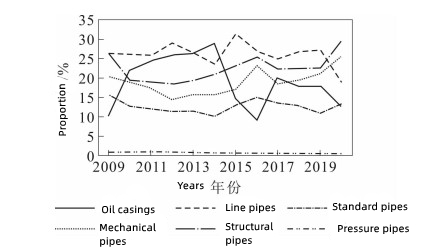
Figure 1 The proportion of varieties in the apparent consumption of welded pipes in the United States from 2009 to 2020
In the past ten years, with the strategic improvement and rapid development of international energy, steel pipes have been used more and more in transporting energy. Welded pipes have an important position due to their advantages of economical resources, convenient manufacturing processes, and being suitable for large-diameter manufacturing. Figure 4 shows the composition of the apparent consumption of welded pipes in the United States, the world's largest energy consumer. Among them, line pipes, oil casings, structural pipes, mechanical pipes, and standard pipes (referring to standard pipes for general transportation and structure) account for more than 96%. The consumption of oil casing is affected by market fluctuations; the apparent consumption of line pipes and standard pipes is relatively stable, and the proportion of line pipes in the apparent consumption of welded pipes is relatively high. Mechanical pipes and structural pipes show a slowly increasing trend.
The variety structure of welded pipes in China should be based on the needs of economic development. According to the "The Outlook of Energy of the World and China in2050 (2020 Edition)" report by the Economic and Technological Research Institute of China National Petroleum Corporation: in the context of carbon neutrality, domestic energy development has features of coal reduction, oil slowdown, clean energy and rapidly increase in natural gas and non-fossil energy. The demand for natural gas will enter a peak plateau around 2040, reaching about 550 billion m3. The flexible conversion from natural gas to other energy carriers has become the key to maintaining the resilience, security and stability of the future energy system. In a low-carbon economy, energy consumption will undergo structural changes. In the context of energy conversion, China's welded pipes should pay more attention to the development needs of new energy industries such as automobile, electric power, wind power, the growth of hydrogen in future energy and the demand for pipes for transportation. Welded pipes are used in major projects such as UHV transmission line engineering steel pipe towers and wind power generation. From early transmission shaft pipes to today's shock absorbers, airbags, stabilizer bars and other products, welded pipes are used for automobiles.
In the field of engineering, the advantages of steel pipes in seismic resistance and bridge dynamic load bearing have attracted attention. For mechanical pipes, the diversification of the market provides many possibilities for the application of welded pipes. There are international precedents for using high-precision welded pipes to process and manufacture products such as pipes for hydraulic cylinders and bearings.

Figure 1 The proportion of varieties in the apparent consumption of welded pipes in the United States from 2009 to 2020
Send your message to this supplier
Related Articles from the Supplier
Structural Adjustment of Welded Pipes
- Aug 22, 2022
Knowledge of Welded Pipes
- Jun 12, 2017
Major Types of Welded Pipes
- Nov 05, 2015
Applications of Welded Pipes
- Mar 14, 2017
Cracking of Flattening Tests of Welded Pipes
- Sep 24, 2022
The Status of Development of Welded Pipes in China
- Aug 12, 2022
Flattening Tests of Welded Steel Pipes
- Oct 13, 2022
Related Articles from China Manufacturers
The main uses of welded steel pipes
- Aug 31, 2023
The Heat Treatment Process of Steel Pipes
- Jul 05, 2017
Standards of Welded Steel Pipes
- Aug 13, 2021
Corrosion of Stainless Steel Pipes
- Oct 11, 2017
Applications of stainless steel pipes
- Oct 12, 2023
What Is NDT of Steel Pipes?
- Jul 17, 2017
Related Products Mentioned in the Article
XIAMEN LANDEE INDUSTRIES CO., LTD.
- https://www.landee.cn/
- Address: NO. 321 JIAHE ROAD, XIAMEN, P.R.CHINA 361012
- Phone: 86-592-5204188
- Business Type: Trading, Manufacturer,
Supplier Website
Source: https://www.landeepipe.com/structural-adjustment-of-welded-pipes.html



